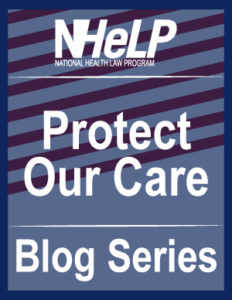 The Senate Republican’s health care bill, the “Better Care Reconciliation Act” (BCRA) defunds critical public health projects that combat population-wide disease threat. While there are many examples of why public health funding is crucial, one of the most compelling case studies is HIV.
The Senate Republican’s health care bill, the “Better Care Reconciliation Act” (BCRA) defunds critical public health projects that combat population-wide disease threat. While there are many examples of why public health funding is crucial, one of the most compelling case studies is HIV.BCRA harms public health in two important ways. First, it phases out Medicaid Expansion, which means that many poor adults will lose coverage. Second, it eliminates the Prevention and Public Health Fund (PPHF), which provides block grants to states for their individual public health needs and supports the CDC’s response to infectious disease outbreaks.
These two cuts, reduced Medicaid eligibility and PPHF’s elimination, create a public health system that will be hard pressed to quickly respond to outbreaks of people with HIV.
In Indiana, public health determined the outcome of the HIV outbreak.
Over the course of 2014 and 2015, a low-income, rural county in Indiana reported 181 new HIV cases, a debilitating figure. The Indiana example shows how public health directly impacts the lives of vulnerable individuals.
On one hand, gaps in public health infrastructure enabled the outbreak. Rural Hoosiers often lacked access to addiction services and needle exchange programs. Moreover, Indiana restricted organizations like Planned Parenthood from providing STI screenings that could have detected and managed HIV before an outbreak occurred.
On the other hand, robust public health funding meant that this outbreak was far less serious than HIV outbreaks of previous decades. First, Indiana expanded Medicaid, which meant that many poor adults affected by the outbreak had health insurance to cover the long-term treatments necessary to manage HIV. Second, Indiana has a block grant from PPHF for their unique public health needs. In this case, this block grant paid for outbreak response and a life-saving needle exchange program .
BCRA would “phase out” the Medicaid expansion and eliminate the PPHF block grants. Had BCRA been law during the outbreak, Indiana would have had fewer resources to respond to the crisis.
Ohio is at risk for a similar outbreak, and public health could be the deciding factor between prevention and outbreak.
When public health workers studied the Indiana outbreak, they found that closing service gaps would have prevented the outbreak. If you think about it, that is not a complicated idea. Bad health care, in Indiana, leads to bad health.
This suggests that high-risk regions can take steps to prevent an outbreak like Indiana’s. One of these high-risk regions is Ohio, which has an alarming prevalence of injection drug use and Hepatitis C, two factors which often forewarn an increase in HIV prevalence and mortality.
In Ohio, moreover, black people are eight times more likely to contract HIV than white people. This disparity is even more pronounced among women. And men who have sex with men are also especially vulnerable . Thus, in Ohio, individuals most at risk – people of color, women, and men having sex with men – are marginalized individuals.
Ohio receives the fourth largest PPHF block grant , behind California, Texas, and New York. In addition, Ohio has expanded Medicaid, which means poor adults have increased access to health insurance.
If BCRA passes, Ohio will lose about $115 million in public health funding in the next five years, which will diminish their ability to prevent or respond to a potential HIV outbreak. In addition, many poor adults who now qualify for Medicaid will lose their insurance. These cuts could mean the difference between risk and emergency in Ohio.
As a case study, HIV shows how public health funding directly impacts the health of the most vulnerable Americans. States like Indiana and Ohio can’t risk BCRA.
For more information on BCRA and its impact on the Medicaid program, sign up for our email updates and follow us on Twitter and Facebook.
Share

